Give the decreasing order of the relative reactivity towards SE reaction of the following compounds.
a. I. Benzene, II. Phenol, III. Aniline, IV. Chlorobenzene
b. I. Acetannilide, II. Aniline, III. Acetep[jempme, IV. Benzene.
c. I. 1,3- Dimryhyl benzene, II. 1,4− Dimenthyl-benzene, III. Tolune, IV. Trimehtyl benzene, V. 1,3,5− Trimethtyl benzene
d. I. p− Mehtyl benzoic acid, II. Terephtalic acid, III. p− Xylene, IV. Toluene.
e. I. Benzene, II. Toulene, III. p−Nitrotoulene, IV. m− Nitroluence, V. Benzence
g. I. Flurobenzene, II. Chlorobenzene, III. Bromobenzene, IV. Iodobenzene
h. I. p− Nitrochlorobenze II. Chlorobenzene, III. 2.4− Dintrochlorobenzene
a. (III)>(II)>(I)>(IV)(PhNH2>PhOH>PhH>Ph−Cl)
Reactiving of −NH2>−OH>−H>−C,
b. (II)>(I)>(IV)>(III)
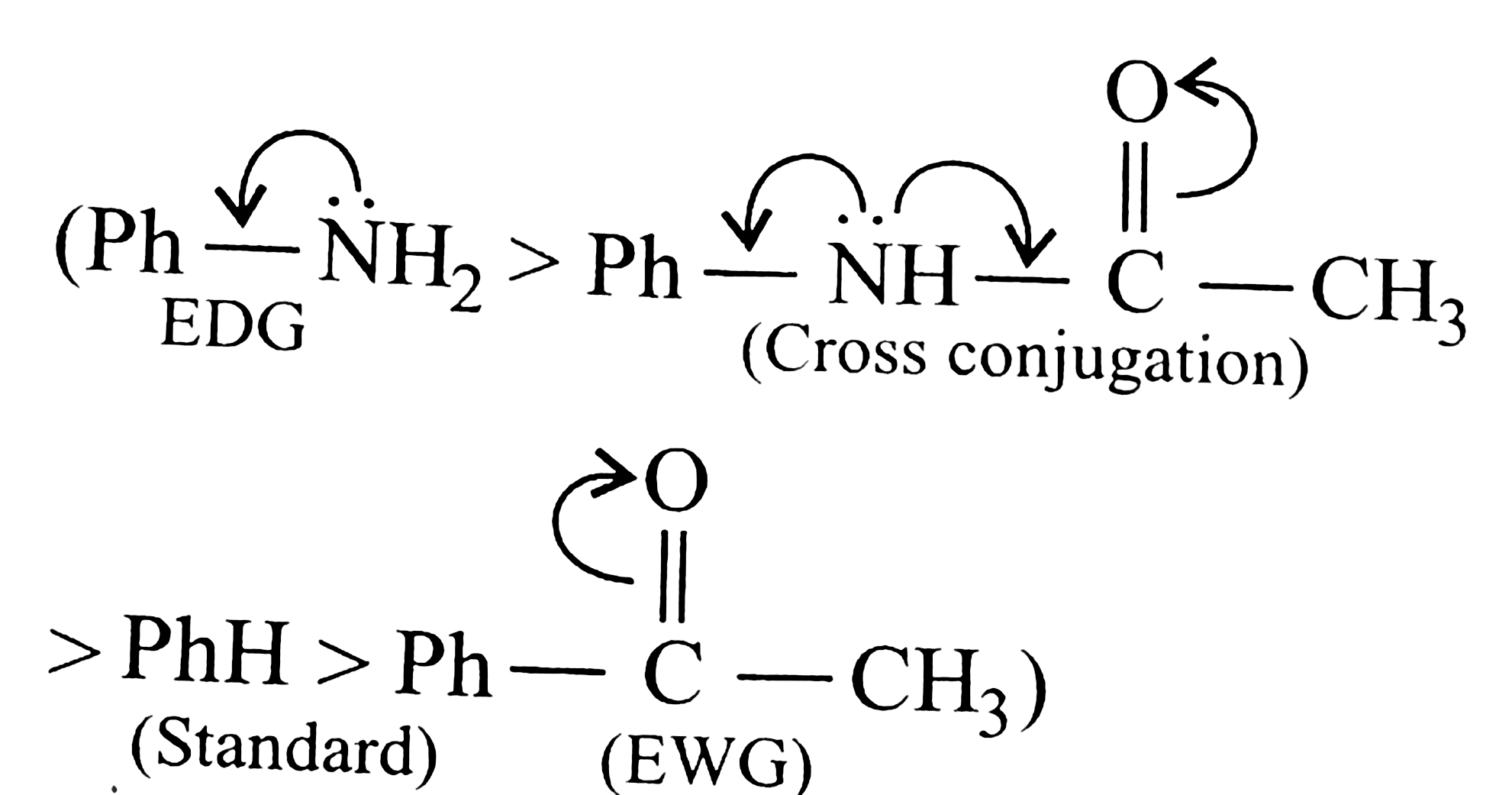 c. (V)>(II)>(I)>(III)>(IV)
c. (V)>(II)>(I)>(III)>(IV)
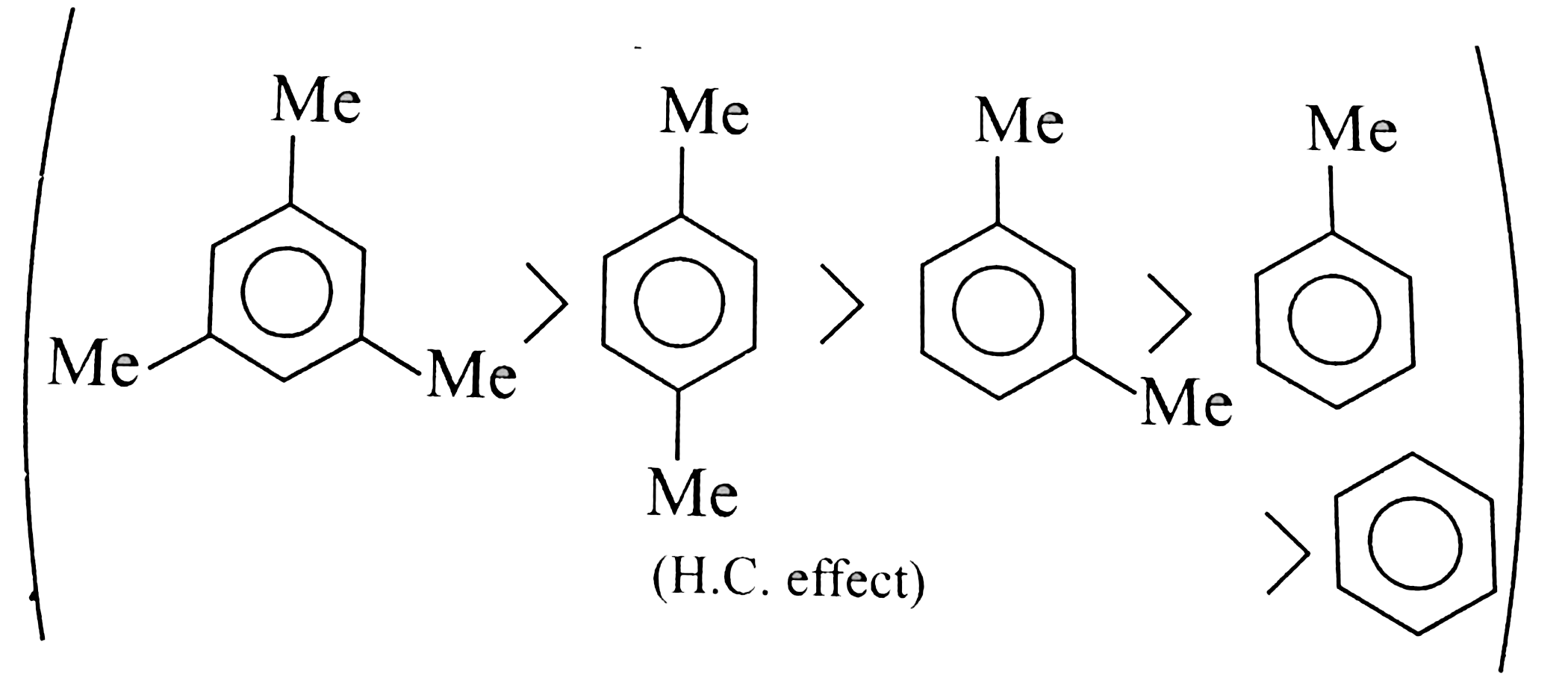
d. (III)>(IV)>(I)>(II)
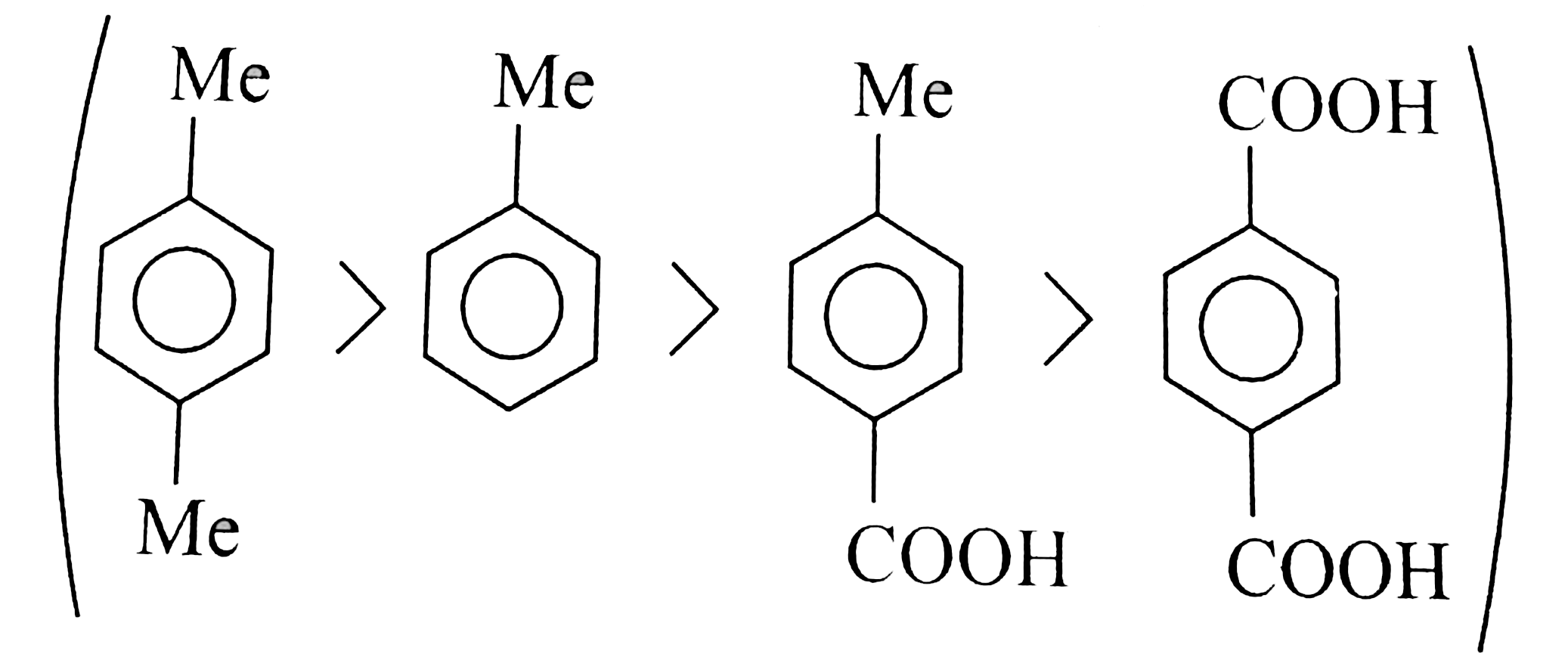
e. (II)>(III)>(IV)>(V)>(I)
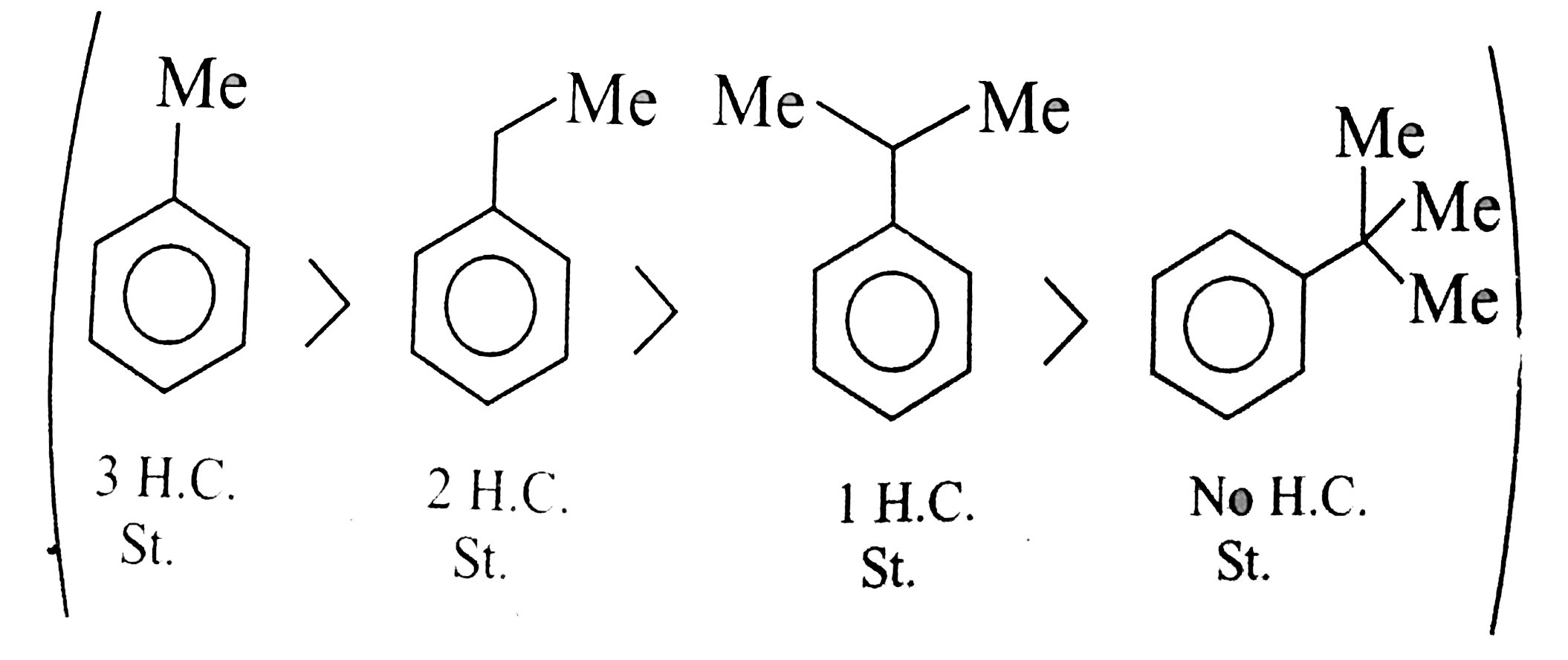
f. (I)>(II)>(V)>(IV)>(III)
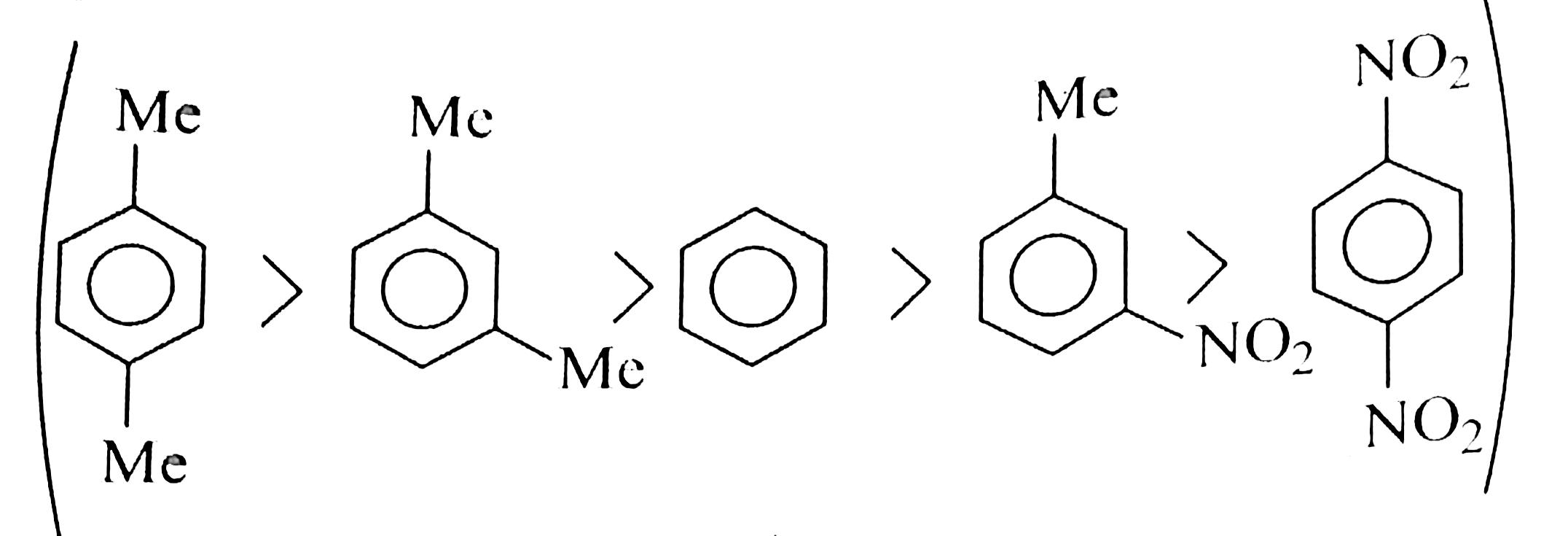 Explanation: Hyperconjugative effect is stronger at o− adnd p-positionsthanatm-position.So,thereactivityof(I)>(II).¯e withdrawing by resonance of (−NO2) is stronger at o− and p− positons than at m− positon. The deactivating effect is more at o− and p− positons, so the reactivity of (IV)>(III).<br>g.(IV) gt (III) gt (II) gt (I) (ph - Br gt PhCl gt Phf)ReactivityatI gt Br gt Cl gt F(⊥h-Iand+Reffects)[Illustration11.18 (f)].<br>h.(II) gt (I) gt (III)
Explanation: Hyperconjugative effect is stronger at o− adnd p-positionsthanatm-position.So,thereactivityof(I)>(II).¯e withdrawing by resonance of (−NO2) is stronger at o− and p− positons than at m− positon. The deactivating effect is more at o− and p− positons, so the reactivity of (IV)>(III).<br>g.(IV) gt (III) gt (II) gt (I) (ph - Br gt PhCl gt Phf)ReactivityatI gt Br gt Cl gt F(⊥h-Iand+Reffects)[Illustration11.18 (f)].<br>h.(II) gt (I) gt (III)
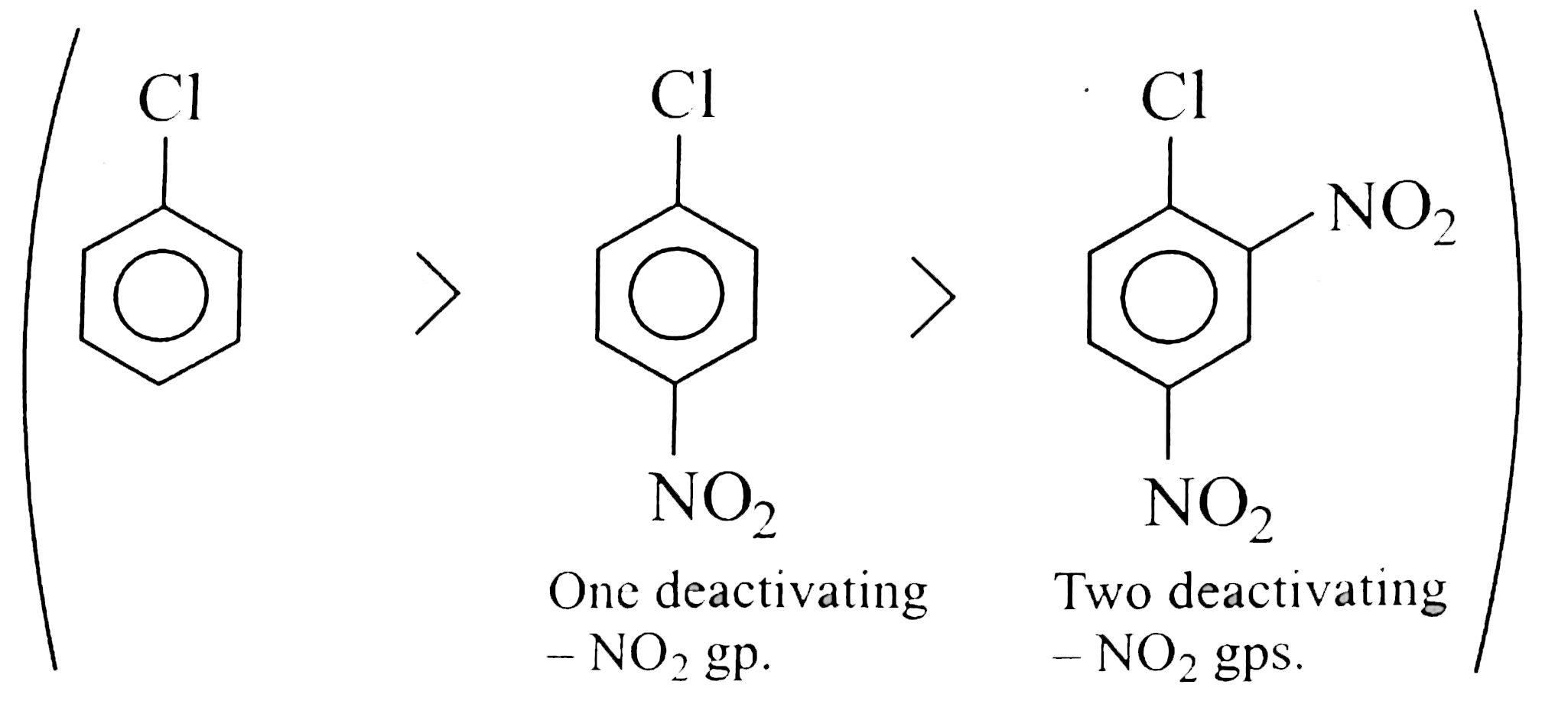
Topper's Solved these Questions
- AROMATIC COMPOUNDS AND ALKYL AND ARYL HALIDES BOOK - CENGAGE CHEMISTRYCHAPTER - AROMATIC COMPOUNDS AND ALKYL AND ARYL HALIDES EXERCISE - Solved Examples
21 Videos
- AROMATIC COMPOUNDS AND ALKYL AND ARYL HALIDES BOOK - CENGAGE CHEMISTRYCHAPTER - AROMATIC COMPOUNDS AND ALKYL AND ARYL HALIDES EXERCISE - Solved Problems
37 Videos
- APPENDIX INORGANIC VOLUME 2BOOK - CENGAGE CHEMISTRYCHAPTER - APPENDIX INORGANIC VOLUME 2EXERCISE - Short Answer Type
179 Videos
- BIOMOLECULESBOOK - CENGAGE CHEMISTRYCHAPTER - BIOMOLECULESEXERCISE - Exercises Archives (Analytical And Descriptive)
8 Videos
Similar Questions
Knowledge Check
The decresing order of reactivity towards SE (substitution by electrophile) of the following is :
(I) Nitrobenzene
(II) Chlorobenzene
(III) Toluene
(IV) Benzene.A(I)>(II)>(III)>(IV)B(IV)>(III)>(II)>(I)C(III)>(IV)>(II)>(I)D(I)>(II)>(IV)>(III)The order of decreasing reactivity towards an electrophilic reagent, for the following:
(i) Benzene
(ii) Toluene
(iii ) Chlorobenzene
(iv) phenol would beA(i)>(ii)>(iii)>(iv)B(ii)>(iv)>(i)>(iii)C(iv)>(iii)>(ii)>(i)D(iv)>(ii)>(i)>(iii)The order of decreasing reactivity towards an electrphilic reagent for the following,
(i). Benzene
(ii). Toluene.
(iii). Chlorobenzoic acid.
(iv). Phenol. Would.A(iv)>(ii)>(i)>(iii)B(i)>(ii)>(iii)>(iv)C(ii)>(iv)>(i)>(iii)D(iv)>(iii)>(ii)>(i)
Give the decreasing order of reactivity for the following coupling compounds with PhN2Cl.
a. I. Aniline II. Phenol III. Toluene IV. Chlorobenzene V. Nitrobenzee
b. I. toluene II. Ethyl benzene III. Cymene IV. T-Butyl benzene V. Anisole .
View SolutionThe decresing order of reactivity towards SE (substitution by electrophile) of the following is :
(I) Nitrobenzene
(II) Chlorobenzene
(III) Toluene
(IV) Benzene.
View SolutionThe order of decreasing reactivity towards an electrphilic reagent for the following,
(i). Benzene
(ii). Toluene.
(iii). Chlorobenzoic acid.
(iv). Phenol. Would.
View SolutionWhat is the decreasing order of reactivity amongst the following compounds towards aromatic electrophilic substitution
I. Chlorobenzene
II. Benzene
III. Anilinium chloride
IV. Toluene
View SolutionThe correct order of reactivity towards the electrophilic substitution of the compounds anisole (I), benzene (II) and nitrobenzene (III) is :-
View Solution
